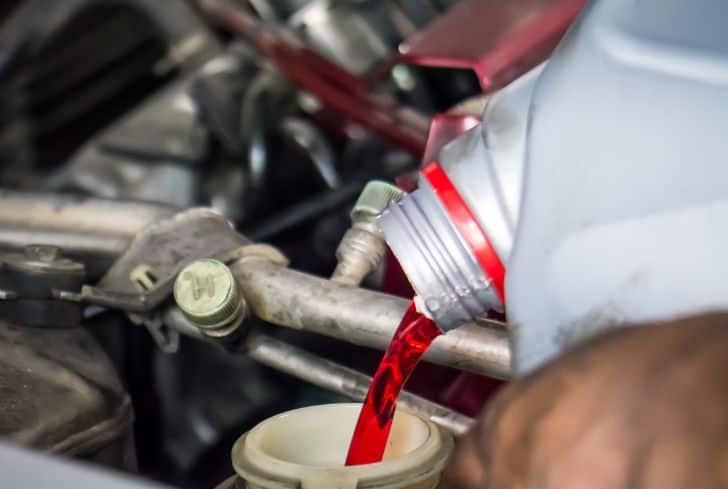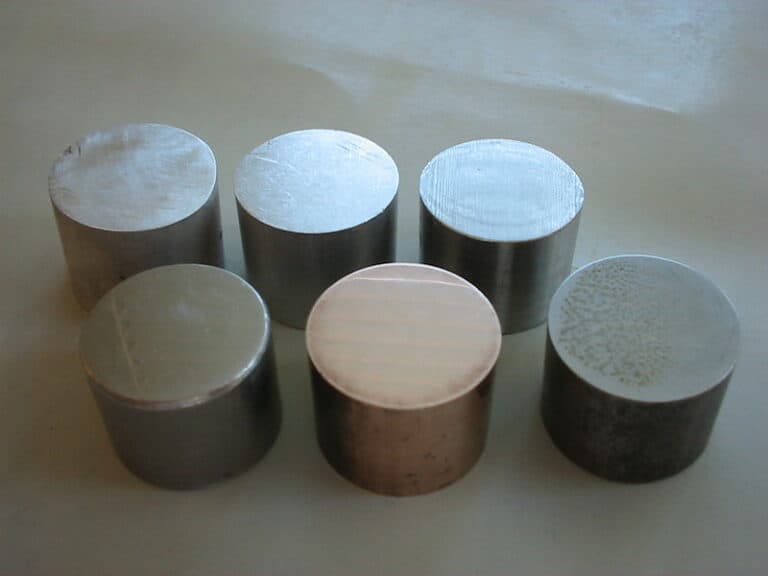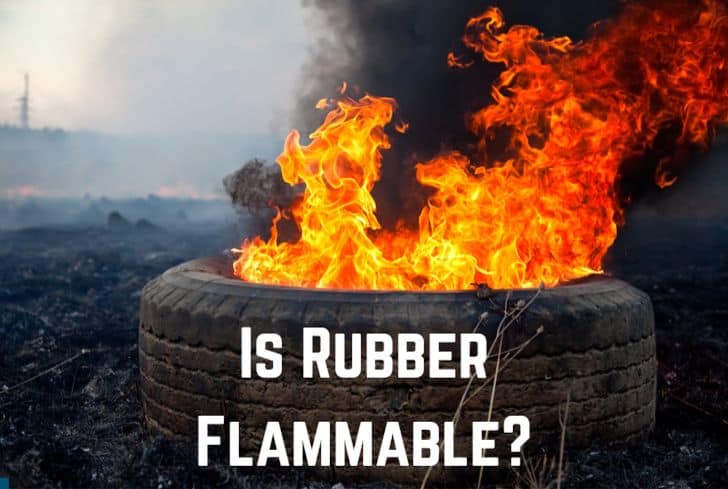Is Transmission Fluid Flammable? (Yes, But…)

Many different fluids circulate within a vehicle. From engine oil to radiator fluid to air conditioning refrigerant, it’s critical to keep each of these fluids in check to keep your automobile in the best condition. Transmission fluid is not any less important.
Transmission fluid is used to lubricate the components of a car’s transmission for optimal performance. In a car’s manual gearbox, transmission fluid lubricates the metal components and bearings to prevent them from grating against one another when the gearbox rotates.
You might be curious about how transmission fluid might respond given that most oils are combustible and can occasionally burn up when they become too heated. Is transmission fluid really flammable? You don’t have to look any further, just sit back and give this a read.
Is Transmission Fluid Flammable?
Transmission fluid is flammable, although it requires high temperatures to ignite automatically, as do many other extremely viscous flammable compounds. Many scientists believe it is more combustible rather than flammable due to the high temperature necessary for its flammability.
The flashpoint and the boiling point are two important parameters to consider when determining a fluid’s flammability. For flammable materials, the flash point is lower than its boiling point.
The flashpoint of a material is the temperature at which it emits flammable vapors. Transmission fluid has a flashpoint of about 383°F (195°C), which itself is below the boiling point of 550 – 600°F (288 – 316°C).
However, while dealing with transmission fluid, you don’t have to worry about it being life-threatening. Certainly, transmission fluid can catch on fire, but in most cases, it will not.
Due to its very high flashpoint, transmission fluid does not burn as quickly as lighter fluid or gasoline. Therefore, it must be heated quite a bit before it may catch fire.
How Flammable is Transmission Fluid?
Under normal conditions, transmission fluid is really not flammable. It is, however, combustible and therefore will ignite when heated over its flashpoint, which ranges from 302°F to 383°F (150 – 195°C).
Transmission fluid is safe to deal with under typical operating circumstances within an automated gearbox and will not catch fire easily even at quite high temperatures. Though the possibilities of transmission fluid catching fire are rare, they can not be disregarded.
Despite having a high flashpoint, transmission fluid can nevertheless catch fire in certain situations. Transmission fluid has been reported to catch fire in vehicles after collisions or as a result of significant, ongoing leaks.
A sufficient amount of transmission fluid coming into touch with a hot surface can make such an intake manifold, which generally causes this sort of fire to ignite.
What is the Flash Point of Transmission Fluid?
Transmission fluid has a flashpoint that varies from 302°F to 383°F (150 – 195°C). It is available in a variety of forms, and the sort of additives employed can affect the flashpoint temperature.
The lowest temperature at which a material’s vapors ignite in the existence of an ignition source is the definition of a material’s flashpoint.
Due to the high flashpoint of transmission fluid, it is considered combustible rather than flammable. Although it can catch fire, it is very rare for transmission fluid to be the first cause of vehicle fire. It will only be a secondary cause due to the vehicle already burning and heating it up beyond its flashpoint.
Can Transmission Fluid Burn?
Indeed, transmission fluid has the potential to burn if an appropriate ignition source is used or if the fluid is heated over its autoignition temperature. Additionally, it can catch fire and burn if it comes into touch with a hot surface, like a heated exhaust pipe or an engine block, or it can burn easily if added to an already burning fire.
Typically, “burnt” transmission fluid is a sign of an automatic transmission issue. In the instance of it going beyond its autoignition temperature, the transmission fluid isn’t technically burning in the conventional sense; instead, it frequently overheats and degrades.
The transmission fluid may frequently overheat inside if there is not enough fluid in the transmission. The transmission fluid will degrade from overheating, and there will be a burning odor when driving.
However, it can actually catch fire if it is heated beyond its flashpoint but this is a rare occasion.
Can Transmission Fluid Auto-ignite?
Transmission fluid may auto-ignite at a specific temperature and under specific circumstances, just like any other fluid in your car.
The autoignition temperature of a material is the lowest temperature at which it will spontaneously burn in the absence of an ignition source.
The temperature at which a material may auto-ignite, also known as its kindling point, varies depending on the height, humidity, and atmospheric pressure of the neighboring environment.
The transmission fluid’s autoignition temperature varies based on its location and the surrounding environment at the time. When tested within a sealed heated container, the autoignition temperature of transmission fluid, for instance, reduces significantly to below 600°F (316°C) from its reported value of 900°F (482°C) on a heated catalytic converter.
Because it provides the activation energy required for combustion to take place, the high temperature is what causes autoignition.

Can I Put Transmission Fluid in a Hot Car?
It is not ideal to put transmission fluid in a very hot or cold car. Two markings, commonly labeled “Cold” and “Warm,” are frequently dispersed over the dipstick. They may occasionally have the labels “Add” and “Full.” You want the level to be somewhere in the “Warm” range.
Sometimes there might not be any words on the dipstick. The fluid level range that you wish to be in is indicated by dots, notches, or lines adjacent to each label.
Each car is different, so there is no specific rule that applies to all of them. However, most car manufacturers recommend that you add transmission fluid while the engine is running. This is because transmission fluid expands when heated up, so if you add it while the engine is completely cold, you run the risk of overfilling your transmission.
Overfilling the transmission can lead to blown gaskets or even destroy your transmission pump.
To make sure you’re doing it the right way, there are some advised steps when it comes to the process of filling transmission fluid. These advisories are generally recommended by car manufacturers and should be paid attention to.
How To Store Transmission Fluid Safely?
The safest way to store transmission fluid is in a dry area with a temperature in the range of 50 – 77°F (10 – 25°C). But keep in mind that the sort of container used to keep the lubricant has a significant impact on how long transmission fluid will remain usable. Using the original packaging is the recommended course of action.
Transmission fluids in their original containers can be used without a problem for the stipulated service time if you adhere to the storage requirements.
There is a date of manufacturing and date of expiring mentioned in packs of lubricants for a reason. Transmission fluids typically have a shelf life of no longer than five years after the manufacturing date.
However, this time frame is only indicated for items that are firmly closed, sealed, and kept in accordance with recommendations.
If there is a lack of original packing, these points should be kept in mind while storing transmission fluid.
1. Use a Metal Container
A hermetically sealed metal container is the ideal option since UV radiation can negatively affect the qualities of transmission fluid. Transmission fluids in metal canisters have the greatest shelf life.
2. Avoid Glass Containers
Transmission fluid should not be stored in glass containers as they stand out for their poor dependability. The fluid’s qualities will suffer if the container cracks and glass fragments are combined with the fluid.
3. Don’t Use Plastic Containers
Plastic storage containers are only suitable for transient storage. The main problem is that plastic and transmission fluid might have a chemical interaction.
FAQ’s
What Should I Do If My Transmission Fluid Is Burnt?
When your transmission fluid burns, it indicates that the transmission system is overheating, and you should have someone inspect this vehicle component. The mechanics can inspect the gears, but the problem may be the fluid. You may have a depleted fluid or one of poor quality.
What Causes Transmission Fluid to Overheat?
One of the problems with the transmission system is overheating transmission fluid. A burning smell and a difficult driving experience are two indicators of transmission fluid overheating. Fluid overheating can be caused by a lack of fluid, polluted fluid, or a defective solenoid, among other things. If you have these problems, you should take your automobile to be repaired.
Final Thoughts
We hope that this article helps provide you with detailed information on the transmission fluid and all the necessary answers.
Transmission fluid is one of the vital fluids that run through your vehicle. It lubricates the metal components in the gearbox to keep your car running smoothly. You don’t have to worry about it being life-threatening because its flashpoint is very high. So, it will not catch fire easily.






